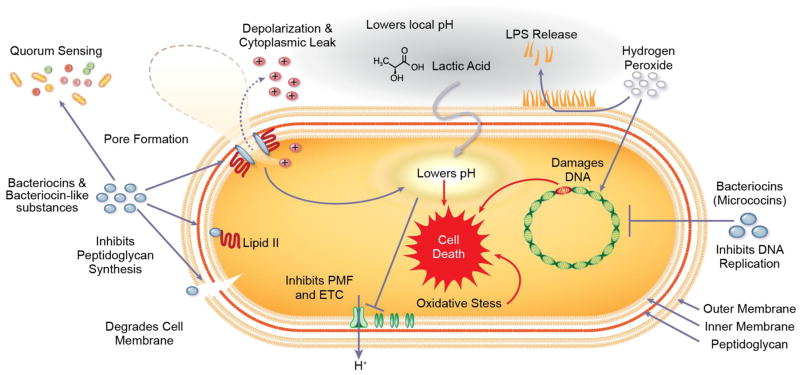Figure 3.
Schematic representation of the molecular mechanisms of commensal secreted products on a gram-negative bacteria. Bacteriocins are classified based on their structure. Bacteriocins such as nisin bind to a peptidoglycan subunit transporter, thereby preventing cell wall synthesis and resulting in cell death. Furthermore, bacteriocins can initiate pore formation. Pore formation depletes the bacterial transmembrane potential (Δψ) and/or the pH gradient, resulting in membrane disruption and cellular leakage that leads to rapid cell death. Other bacteriocins are able to directly insert themselves directly or degrade the target membrane, leading to depolarization and death. Bacteriocins have also been shown to serve as quorum sensing molecules for other microbes. Lactic acid decreases local pH and suppresses the growth and survival of pathogens. Additionally, un-dissociated lactic acid can traverse the outer membrane (OM) via water-filled porins and penetrate the cytoplasmic membrane. This shift lowers the intracellular pH and disrupts the transmembrane proton motive force and generates oxidative stress. Hydrogen peroxide and select bacteriocins such as micrococcins damage bacterial DNA and inhibit cell growth. Together, these compounds secreted by select members of the microbiota effectively target pathogens.

